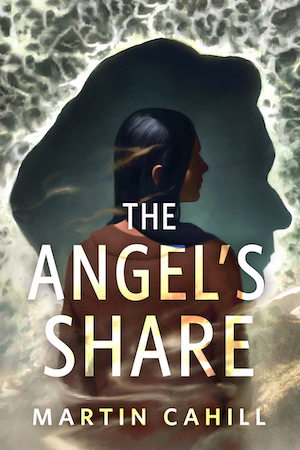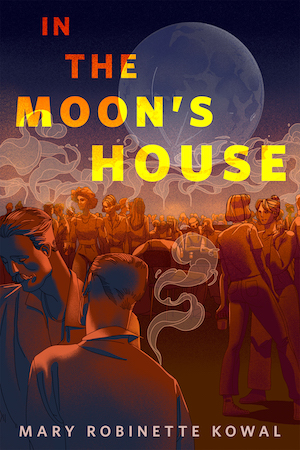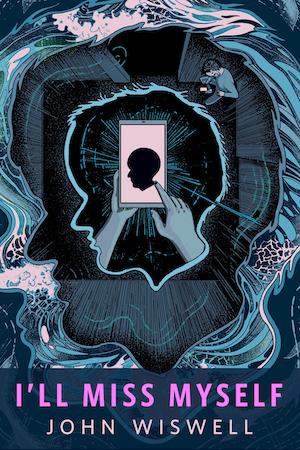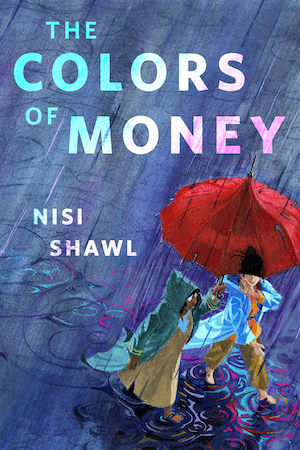Pour yourself a cup of tea or a mug of hot chocolate, cuddle up with your (winged) cat, and come sit by the fire… Hello and welcome! Let’s talk cozy fantasy, a subgenre rising in popularity.
Cozy fantasy didn’t spring out of Zeus’s head, fully armored and sipping tea. There are plenty of older novels that, if they came out today, would be called cozy fantasy (to name just two: Howl’s Moving Castle by Diana Wynne Jones and Dealing With Dragons by Patricia C. Wrede). But cozy fantasy blossomed into a distinct and popular subgenre with its own label in 2020.
Yeah.
That year.
Born in a time of pain and fear and loneliness and discontent and boredom and ever-present existential dread, it rose to fill a need. We (okay, not everyone, but me and a whole lot of other readers) needed to escape. And not just escape—we needed to escape someplace that felt warm and gentle and safe.
A cozy fantasy novel is intended to be a gift from the writer to the reader. It’s not only an escape from whatever is hurting you or upsetting you or disappointing you in the world—lots of books are an escape, and lots of books qualify as comfort reads—but what makes cozy distinctive is that it offers sanctuary. It provides a place where you can take a deep breath, in addition to a dose of serotonin.
Like every other subgenre under the sun, cozy fantasy has a set of common tropes, settings, characters, and details that unite its books—and I’ll be talking about all of that in future columns—but what defines it more than anything else is that deep-breath sensation. In other words: the vibe.
To me, cozy fantasy feels like a warm hug. It’s a snowy day with a crackling fire in the hearth, a warm blanket around you and a cat on your lap, and a mug of hot chocolate with a swirl of whipped cream in your hands. It’s a summer afternoon in a wildflower meadow. Blue sky above. Birds chirping in the trees. You’re on a picnic blanket, and there’s an apple crumb pie, still warm, waiting for you in a basket. Really good apple crumb pie, the kind packed with layers of apple slices and not just cinnamon goo.
It’s a friend who sits next to you and tells you everything will be okay.
In March 2020, that friend was the book The House in the Cerulean Sea by TJ Klune. I don’t believe it was officially dubbed “cozy fantasy” at the time of its debut, but it was very quickly identified as one—and its instant popularity paved the way for the rest of the subgenre.
The House in the Cerulean Sea is about forty-year-old Linus Baker, a quiet, uptight, and lonely man who is a case worker at the Department in Charge of Magical Youth. In the words of the novel itself, “If one were to ask if Linus Baker was lonely, he would have scrunched up his face in surprise. The thought would be foreign, and made his stomach twist, there was a chance he would still say no, even though he was, and almost desperately so.”
He’s assigned to assess the living conditions of six children at an orphanage on an island far from his rain-soaked city home. Once there, he meets Arthur Parnassus, the kind and loving master of the orphanage, and his unusual charges: Talia (an ornery garden gnome who’s protective of her friends), Chauncey (a boy made of goo whose life dream is to be a bellhop), Sal (a shy boy who occasionally transforms into a Pomeranian), Theodore (a wyvern who loves buttons), and Lucy (the son of the devil, who is both innocent and vulnerable, in addition to having an overdramatic sense of humor). All adorable, earnest characters who just want to be understood and loved.
As Linus spends time on the island with the orphans, he discovers he has a choice. He can continue on the path he’s been on (as a caseworker for an organization that doesn’t care about him or any of the people they’re supposed to be helping), or he can choose love.
The novel is about his journey from loneliness to companionship (yay, found family!), from self-denial to self-love, and from a life of pent-up and repressed emotion to one of beauty, joy, and even well-placed and well-expressed anger at a system and society that lacks empathy.
It is, at its core, about hope—hope that good people can triumph over apathy and cruelty, that love and friendship can save you, and that it’s never too late to connect with others.
That commitment to hope is one of the defining features of cozy fantasy.
And the book knowingly embraces it: “‘Hope,’ Mr. Parnassus repeated. ‘Because that is what we must give him, what we must give all of them. Hope and guidance and a place to call their own, a home where they can be who they are without fear of repercussion.’”
Subgenres don’t rise in a vacuum. They exist in a specific moment in history, reflecting the needs of their writers and readers. Cozy fantasy is designed to be an antidote to the casual (and sometimes deliberate) cruelty of life in this day and age. It embodies and promotes empathy, tolerance, and kindness. It is the promise of peace and comfort and joy.
When I was reading The House in the Cerulean Sea, I marked the moment when Linus first sees the ocean with the note, “This is it.” This is the moment that solidifies the book as a true cozy fantasy. And this is the moment that I fell in love with it:
It was as if the rain clouds had reached as far as they could. The gray darkness gave way to a bright and wonderful blue like Linus had never seen before. The rain stopped as they passed out of the storm and into the sun. He closed his eyes briefly, feeling the warmth through the glass against his face. He couldn’t remember the last time he’d felt sunlight. He opened his eyes again, and that’s when he saw it, in the distance.
There was green. Bright and beautiful greens of waving grass, and what appeared to be flowers in pinks and purples and golds. They disappeared into white sand. And beyond the white was cerulean.
This passage revels in sensory details—a hallmark of cozy fantasy. It focuses on both the character’s emotional and visceral reaction to the world around them, and it ties that sensory experience directly to the character’s internal transformation. This moment is the catalyst that cracks open his heart and mind, readying him for all that he’ll discover at the orphanage. Linus is forever changed by his experience of viewing the cerulean sea.
I had a similar experience when I read this book. It was a revelation, opening me to possibilities. I remember closing this book and thinking, “I want to write a book that feels like this.” It struck the spark that eventually led me to write my forthcoming book, The Spellshop.
My book, The Spellshop, is a cozy fantasy about a rogue librarian and her best friend, Caz, a talking spider plant, who take on the low-stakes market of illegal spell-selling and the high-risk business of starting over. And I poured every bit of delight and joy into it that I could. It’s filled with hope and peace and comfort, as well as raspberry jam, winged cats, and merhorses.
And I might not have written it if I hadn’t first gazed out at the cerulean sea.
Buy the Book
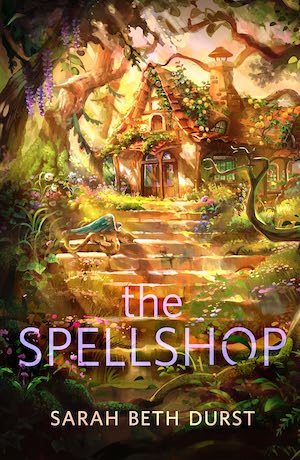

The Spellshop


